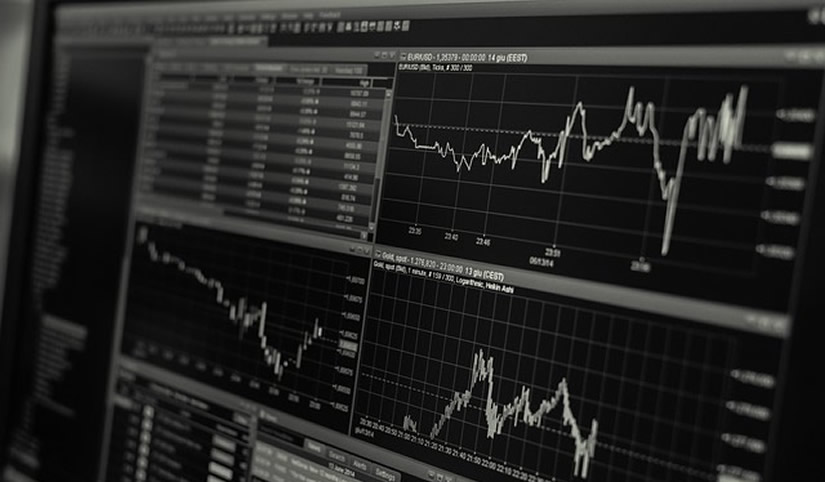By Han Tan Market Analyst, ForexTime
Asian stocks are in the red after US benchmark indices pulled back from record highs, with stocks on the Nasdaq unable to hang on to their year-to-date gains. 10-year Treasury yields have posted a new high since January 2020, much to the chagrin of stock market bulls, while the VIX index climbed back above the psychologically-important 20 level.
No rest for the weary
Although concerns over today’s quadruple witching may give rise to heightened volatility before the end of the trading week, unruly bond yields are likely to be the main culprit still going forward. The slew of Fed speak in the upcoming week may also act as trigger points for market volatility, especially if any of the officials offer deviating views from what had been conveyed by the Fed Chair himself after this week’s FOMC meeting.
Jerome Powell & Co. certainly have a fine line to tread in conveying their collective policy bias moving forward, as this high-stakes game of chicken heats up between the Fed and the markets. Despite Powell’s repeated insistence ad nauseum that policymakers intend to look past the green shoots of the recovery and maintain their ultra-accommodative stance, the Fed’s credibility risks being challenged by the economic prints and investors’ seemingly unrelenting expectations for faster inflation.
It remains to be seen who will ultimately blink, the Fed or Treasury yields. And that eventual swerve by either party is set to cause another massive reaction across global assets.
Free Reports:
Get our Weekly Commitment of Traders Reports - See where the biggest traders (Hedge Funds and Commercial Hedgers) are positioned in the futures markets on a weekly basis.
Sign Up for Our Stock Market Newsletter – Get updated on News, Charts & Rankings of Public Companies when you join our Stocks Newsletter
With both the Fed and the BOE passing up on the chance to dampen the yields surge this week, bond markets had little qualms in continuing their challenge against the central banks. As long as Treasury yields continue surging higher, tech stocks will likely continue experiencing downward pressure.
Brent futures set for biggest weekly loss since April
Commodities are not being spared from the threat of faster inflation either, with Brent futures plummeting almost 7% on Thursday as the global oil benchmark hurtled towards its 50-day simple moving average. Markets are concerned that inflation rates that are rising too high too fast could in turn crimp global demand for the commodity. Brent futures have now posted a fifth consecutive day of losses, which has shaved off more than 10 percentage points from their gains so far in 2021.
With US stockpiles returning to December’s levels above 500 million barrels, coupled with the IEA’s latest assessment regarding the still “ample” global inventories, traders had already walked back some of the gains in oil benchmarks earlier this week before being slammed by another yields surge. The dollar recovery on Thursday on the back of rising Treasury yields has trimmed Brent’s year-to-date advance down to 23% at the time of writing.
Much of the optimism pertaining to the latest rounds of US fiscal stimulus and OPEC+ output decision had already been baked into oil prices.
Hence, demand-side factors have to yield further signs of a recovery in order for Brent to reclaim the $70 handle level. Still, as the vaccine continues coursing its way throughout the world, with major European countries resuming the use of AstraZeneca’s dose, a sustained global demand recovery is necessary to keep prices relatively buoyed in the interim.
Disclaimer: The content in this article comprises personal opinions and should not be construed as containing personal and/or other investment advice and/or an offer of and/or solicitation for any transactions in financial instruments and/or a guarantee and/or prediction of future performance. ForexTime (FXTM), its affiliates, agents, directors, officers or employees do not guarantee the accuracy, validity, timeliness or completeness, of any information or data made available and assume no liability as to any loss arising from any investment based on the same.
 Article by ForexTime
Article by ForexTime
ForexTime Ltd (FXTM) is an award winning international online forex broker regulated by CySEC 185/12 www.forextime.com

- Stock indices have hit all-time highs. The Australian labor market is starting to cool down May 16, 2024
- Target Thursdays: USDInd, Soybean & EU50 hit targets! May 16, 2024
- JPY has sharply strengthened May 16, 2024
- PBoC kept the interest rate unchanged. The US stock indices rise despite rising manufacturing inflation May 15, 2024
- Meme-stock mania: Will GameStop, AMC stocks surge even higher? May 15, 2024
- Euro climbs to five-week high ahead of US CPI data May 15, 2024
- Australia will release its annual budget today. Rising inflation expectations hurt US stock indices May 14, 2024
- JPY declines again May 14, 2024
- Trade of the Week: CHINAH to extend lead as Asia’s winner? May 13, 2024
- The German index has hit an all-time high. China sees rising consumer inflation May 13, 2024
